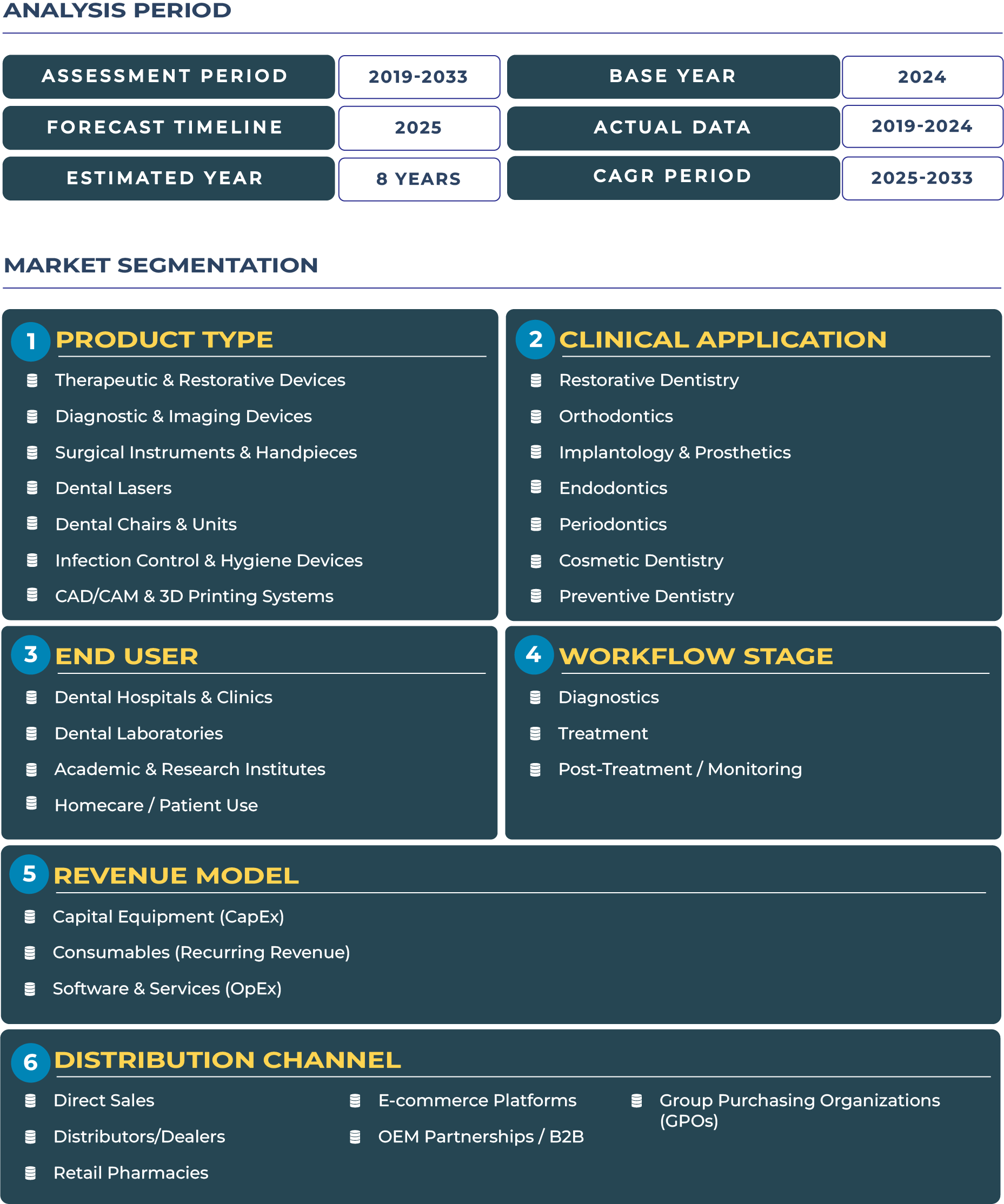Russia Dental Devices Market Outlook: Balancing Implant Growth and Import Substitution Amid Sanctions
The Russia dental devices market is entering a critical phase of transformation as it balances growing implant demand with the need for import substitution under ongoing sanctions. With an estimated market value of USD 485.0 million in 2025, the industry is projected to reach USD 555.3 million by 2033, growing at a CAGR of 1.7%. This performance underscores the unique dynamics of the sector—expanding private insurance coverage, demand for implants in urban clusters such as Moscow and St. Petersburg, and the urgent push toward local manufacturing to reduce reliance on imports. Russia’s healthcare ecosystem, shaped by evolving policies and industrial strategies, is redefining the landscape for dental devices through innovation, affordability, and adaptation to geopolitical constraints.
How Implant Demand and Sanction-Led Import Substitution Are Shaping the Market
The Russian dental devices industry is increasingly reliant on domestic production as international supply chains remain disrupted by sanctions. Implants and prosthetic devices represent a large share of demand, with patients in metropolitan areas showing rising willingness to invest in cosmetic and restorative procedures. The government’s push to accelerate local manufacturing, combined with policy-backed substitution incentives, creates opportunities for indigenous companies to capture market share previously held by global suppliers. The steady CAGR of 1.7% reflects the dual pressures of innovation and constraint—growth in private-pay markets counterbalanced by challenges in securing high-quality imports and stabilizing currency volatility.
Key Growth Catalysts Driving the Russian Dental Devices Ecosystem
One of the strongest drivers is the concentration of large urban clinic clusters, which continue to expand capacity for implantology and restorative treatments. This growth is supported by increasing demand for domestically manufactured low-cost devices, particularly dental chairs, surgical handpieces, and infection control systems that meet affordability criteria. Another critical driver is the emergence of private dental insurance pockets that improve accessibility for middle-class consumers. Together, these factors are creating an ecosystem where private healthcare operators play a pivotal role in accelerating modernization and adoption of advanced technologies, including CAD/CAM systems and dental lasers.
Challenges Hindering Market Progress in Russia Dental Devices Sector
Despite growth drivers, the Russia dental devices market faces multiple restraints. The foremost challenge is geopolitical and sanctions-related restrictions, which directly impact imports of high-value diagnostic and imaging devices. Currency volatility remains another persistent restraint, complicating the ability of clinics and distributors to price imported equipment sustainably. Additionally, regulatory opacity in some sub-segments—especially concerning new technologies like digital scanners—creates uncertainty for global and local stakeholders. Fragmented distribution models further slow penetration in rural areas, making the market highly uneven in terms of access and affordability.
Emerging Trends and Untapped Opportunities in Russia Dental Devices Landscape
Russia dental devices market is witnessing distinct trends such as growing demand for implants and cosmetic procedures, especially in cities like Moscow and Kazan. Another trend is the increased share of domestic OEMs, which are gradually replacing international brands in basic therapeutic and restorative devices. Additionally, tele-dentistry pilots in remote regions highlight the government’s push for digital solutions in underserved areas. On the opportunities side, local OEM partnerships represent a major growth lever, enabling co-development of cost-effective solutions tailored to local price points. Similarly, after-sales service networks and affordable CAD/CAM solutions provide high potential for companies willing to invest in long-term localization strategies.
Competitive Landscape: Building Resilience Through Local Partnerships and Service Networks
Global brands like Straumann and regional players continue to compete alongside Russian manufacturers, who benefit from policy-driven import substitution. One of the most notable strategies has been forming OEM partnerships with local distributors, ensuring resilient supply chains despite sanctions. Between 2022 and 2025, national reports have highlighted initiatives in domestic medical device production, particularly for surgical handpieces and dental chairs. Companies that establish robust after-sales parts networks with local service providers have gained a competitive edge, as consistent equipment uptime is increasingly critical in high-volume clinics. These strategies illustrate the sector’s pivot toward resilience and adaptability, making the Russia dental devices market one of the most unique in the global landscape.







